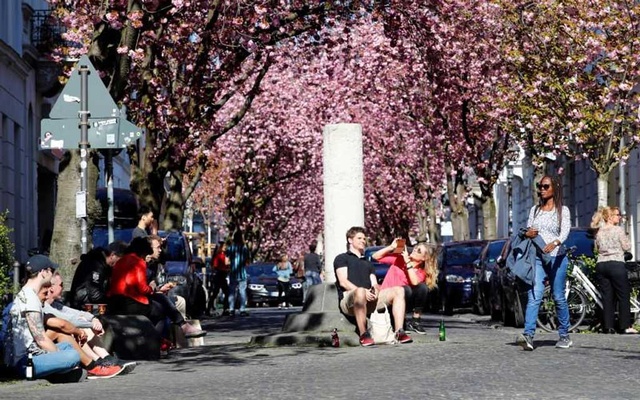
The New York Times: As the summer tourist season approaches and Western Europe’s COVID-19 crisis continues to subside, leaders across the Continent are deciding whether and how to lift the border restrictions that they imposed amid a flurry of emergency measures in March. The European Commission has urged its members to coordinate their reopening, but a patchwork of strategies has emerged. Some countries — Italy and Germany among them — are reopening earlier and more widely. Others — like Switzerland, Denmark and the Baltic States — are proceeding more slowly, opting for “travel bubbles” or bespoke lists of countries whose citizens will be allowed entry.
Both approaches have drawn criticism. Bubbles or corridors risk creating confusion and could be seen as discriminatory, some observers say. But opening borders among countries where the epidemiological situations are vastly different risks triggering an increase in cases, which officials are determined to avoid. Indeed, all of the announced plans for reopening have come with an important caveat: If COVID-19 cases start to tick back up, then borders could again be forced to close.
“We need to be sure that a summer tourist season won’t come at the high price of a second wave of infections,” Heiko Maas, Germany’s foreign minister, said in May. “So there will be no ‘normal’ summer holiday this year. Whether the Baltic or the Mediterranean — the social distancing and hygiene rules will apply everywhere,” he said.
For American tourists, Europe will remain off-limits this summer, with a few exceptions. Portugal is allowing entry to US citizens without a quarantine requirement. Britain, the Republic of Ireland and Belarus are also open to US citizens, but require a two-week quarantine. Americans and other non-European Union nationals may be able to visit Iceland from June 15, but all visitors will be subject to a COVID-19 test upon arrival. Other European nations remain closed to visitors coming from across the Atlantic.
The Problem With Travel Bubbles
While Italy, Germany and France are planning to open up widely, other European nations are proceeding more cautiously, drawing up selective lists of countries from which travel will be allowed, or establishing “travel bubbles” along the lines of the one being considered by Australia and New Zealand.
Spain, one of the hardest-hit countries in Europe, is waiting until July to lift most of its travel restrictions. At that point, the country plans to open up to visitors arriving from a list of nations where the epidemic is under control, according to Manuel Muñiz, the Spanish government’s State Secretary for Global Spain. That list hasn’t been finalised, Muñiz said in an interview, but it will probably include most European nations, and could be expanded to a select group of countries from outside the region. (The country’s land borders with neighbouring France and Portugal are due to reopen June 22.) He added that Spain has asked the European Centre for Disease Prevention and Control for specific guidance on how the country should draw up its list.
“When you talk to epidemiologists, what they tell you is that if you have these two containers with equivalent amount of COVID risk, it’s almost irrelevant if there are transfers of movement of people from one place to the other,” said Muñiz. He added that tourist destinations need to be able to do four things in order to welcome visitors safely: Track the virus’ spread; test anyone with symptoms; trace the contacts of those who test positive; and treat those who fall ill.
“When countries open needs to be fundamentally linked to how the disease is performing there, and whether those capabilities are in place,” Muñiz said.
This patchwork of reopening strategies is chaotic and will ultimately undermine European tourism, said Eduardo Santander, the executive director of the European Travel Commission, an association of national tourism organisations in Europe.
“I think that creating corridors, bubbles, bilateral agreements between countries only creates more confusion and frustration for the end consumer,” Santander said. He added that his organisation has been lobbying for a harmonised return of travel and tourism across Europe.
“The information that is out there is so fragmented; it’s also so confusing,” he said, adding that freedom of movement is a pillar of European identity. “It’s not about cutting a deal with your neighbouring country,” he added. “We cannot create these kind of competitive advantages and disadvantages.”
Others Take It Slowly
In many European countries — especially those along the Mediterranean coast — renewing the flow of tourists will be critical to keeping national economies afloat. But it’s not yet clear how many people will be willing to cross a border for their summer vacations.
“We don’t have tourism anymore. Corona has taken it all,” said Marjan Dasic, the manager of Tarsa, a popular restaurant in Rijeka, a Croatian seaside city that was selected as one of Europe’s cultural capitals for 2020.
Normally, you would have to call at least a year in advance to reserve a table at the restaurant, which can seat up to 200 people and welcomes tourists from across Europe and beyond, Dasic said. The restaurant reopened in May after two months of closure, “but it’s like we didn’t open, because no one is coming,” Dasic said, adding that another month without customers will force the restaurant to close for good.
In France, the mountain resort of Chamonix is preparing for a quieter summer than usual. Major events like mountain races, climbing competitions and music festivals have been cancelled, but the area’s trails will be open for hiking and mountain biking, and cable cars will be operating with new hygiene measures in place.

